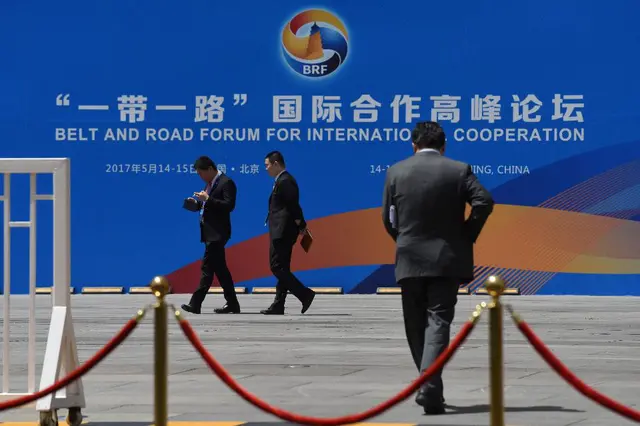The curtain of two-day Belt and Road Forum for International Cooperation falls, with great achievements and expectations all over the world. This carnival gathered 29 heads of state, as well as more than 1,600 decision makers, entrepreneurs, celebrities and well-known scholars. More than 270 bilateral or multilateral agreements on trade and economic cooperation have been signed during the two-day event, and the widely-expected Joint Communique of the Leaders Roundtable of the Forum was released on Monday. Undoubtedly this is an enormously successful forum, but the Long March just begins, in which the formidable challenges lay ahead. All practitioners of Belt and Road had better to bear it in their minds.
In the author’s view, the most significant achievement of this forum is not just the agreements, joint statements, common declarations mentioned above, but several key institutional constructions and great efforts of normalizing the forum itself. For instance, according to the achievement list of the forum provided by the Chinese Foreign Ministry, this forum will be held every two years, and China will cooperate with other countries to establish consultative committee and liaison office of the forum.
Although there is a certain distance between these institutional measurements and the widely-anticipated targets of establishing the “B&R Secretariat” as the most authoritative and comprehensive international organization of the initiative, there is no doubt that all these improvements have upgraded the degree of B&R’s institutionalization to a large extent. Considering the development of other international initiative or projects in history, the “institutionalization” and “normalization/standardization” has played the role of engines boosting the process as a whole. So the author highly appreciates those institutional and organizational buildings.
In addition, there are similar efforts that Beijing will hold the “China International Import Expo” from 2018 onwards in order to establish a platform for the goods-exporting and communication of all B&R member states. According to Xinhua News Agency, Chinese President Xi Jinping also announced that China will hold the second Belt and Road Forum for International Cooperation in 2019. It is widely expected that this biennial forum will cooperate with the annual “China International Import Expo” to advance the initiative by setting up a platform, which not only promote cooperation but also solve potential problems and manage contradictions in the process. Considering the potential institutional guarantees that provided by those long-term mechanisms, it is safe to say they are the major breakthroughs and productive results created by the forum.
However, while seeing great achievements, we also have to be aware of the problems and possible threats in the Long March of B&R. According to reports, China solemnly promised the whole world at the summit that it will add more than 600 billion yuan of investment, including the “Silk Road Foundation” with another 100 billion yuan (200 billion already invested); the China Development Bank and Export-Import Bank will provide new loans of 330 billion yuan; China will provide 60 billion yuan of assistance to countries along the B&R; and Beijing will encourage other Chinese financial institutions to provide loans and financing to B&R participating states.
Certainly, that is a huge sum of money, either as investments or foreign aids, which proves China’s greatest sincerity and strategic credibility in advancing the initiative, and also shows its growing national strength and wealth. However, we cannot ignore the increasing pragmatic problems and threats: can China reach its goal of promoting the national interests by spending such huge amounts of money? Even China has chosen good projects, can we guarantee that those projects can be immune from the interruptions or devastation caused by unexpected the regional wars, such as the cases in Iraq, Libya and other Middle East countries that devoured more than 50 billion US dollars of Chinese companies? Some other cases are caused by political corruption, the failure of governance, or the hostile regime change, such as Venezuela in Latin America.
Similarly, the threat of terrorism and separatism have never gone away from the B&R corridors in either South Asia or Central Asia, including the Gwadar Port, the flagship project collaborated by China and its most loyal ally Pakistani.
What is more, as the logistics and oil industry experts pointed out before the start of Gwadar Project that no matter through what approaches (pipelines, railways, or road), the cost of transporting/importing oil from Gwadar to the consuming industries in Chinese provinces is at least 15 times higher than its counterparts by sea. The B&R-marketing and application of China’s proud high-speed rail also face the similar problem of cost-control and security maintenance from the local terrorist attacks.
Now the B&R Initiative has been in process for four years. It has achieved great achievements, but when looking ahead there is still a long way to go with formidable challenges. On this Long March, the enthusiastic entrepreneurship and strategic prudence are equally important for all the B&R practitioners.
Dr. Wang Peng, Research Fellow at Charhar Institute, Lecturer at the China Institute of Fudan University.
(ASIA PACIFIC DAILY)
 简体中文
简体中文



